Irkutsk
Irkutsk for a long time was the most important of all Siberian towns.
Founded in 1661 as a garrison it quickly acquired administrative and economic
importance and was declared a city only 25 years later.
Irkutsk was the first "window" Russia opened, the window to
the East. Irkutsk became the base for all important expeditions leading
eastwards, to the Amur, to China, to the Pacific. In 1725 Vitus Bering
started from here for his excursions that resulted in the discovery of
the Bering Strait, the Aleute Islands and the incorporation of Alaska
into the Russian Empire. Irkutsk was the center for all trade within Eastern
Siberia and to the Far East. Here the Russian-American Company (founded
in 1799 on the initiative of an Irkutsk merchant) had it’s seat,
whose task was the development of the northern coast of the Pacific Ocean,
making it a useful part of the Russian Empire, by founding points of support
for both military and merchants.
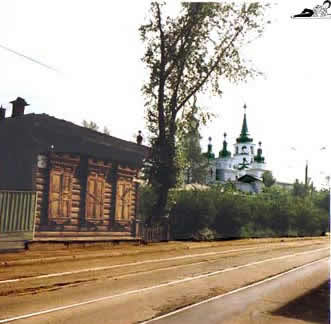 |
Krestovozdvizhenskaya church (Church of the Erection of the Cross) |
For the first one and a half centuries trade and military
had been decisive for the development of Irkutsk. Besides it housed a
considerable number of churches. A big cultural impulse stemmed from the
arrival of the Decabrists who were banished to Eastern Siberia after 1826.
The Decabrists (= decemberists) were people influenced by the ideas of
the French Revolution despite fact that most of them were veterans of
the War of the Fatherland in which the Napoeonic forces which invaded
Russia in 1813 were defeated. They formed secret societies named the Norther
Society and the Southern Society and staged a military uprising in Petersburg
in the december of 1825. The uprising quickly was turned down and a wave
of severe repression started against all those involved. Some were executed
and the others were sentenced to forced labour ("katorga"),
military service in war stricken Caucasus, and banishment.
Many of them were sent to the Irkutsk district and often followed by their
wives who renounced from all privileges they had as members of the nobility
and undertook great hardships in order to somewhat ease the harsh fate
of their husbands. Despite the fact that the Decabrists and their families
were closely surveyed by the authorities and restricted in movement they
started to introduce European culture to the inhabitants of Irkutsk. They
gave lessions in playing the piano and on French literature. They were
the initiators of female education in Siberia. Their memory is highly
honoured in Irkutsk, and it is due to their influence that French is still
taught in Irkutsk schools as the first foreign language.
In 1879 Irkutsk was devastated by a big fire that destroyed most of it’s
(predominantly wooden) buildings. Therefore most of the buildings in Irkutsk
nowadays were constructed after 1879. People in Irkutsk claim, though,
that the building in which the museum of the Decabrists is located dates
from before the Big Fire.
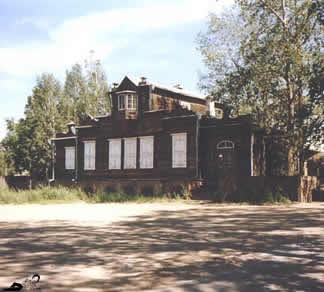 |
"Dom Dekabristov" – Museum of the Dekabrists banished to Irkutsk. Even if it probably wasn’t inhabitated by any Dekabrists, it still is one of the oldest houses in Irkutsk that survived the Big Fire. |
|
Courtyard in Irkutsk
|
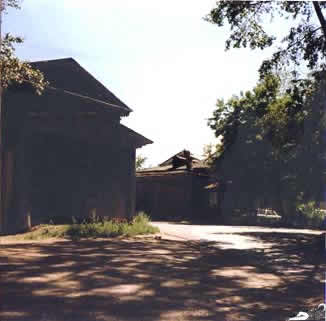 |
Another determinant for the development of Irkutsk was
the connection to the Transsiberian railroad. The building of the railroad
was begun from both sides, from Moscow and from Vladivostok, in 1891.
In 1899 Irkutsk was connected to the western branch and only from this
day it had a stable connection to the centers of European Russia. The
connection to Vladivostok took a few years more and was finally established
in 1903 with the completion of the Eastern part through Manjuria, respectively
with the closing of the last "missing link", the Circum-Baikal
line, in 1905.
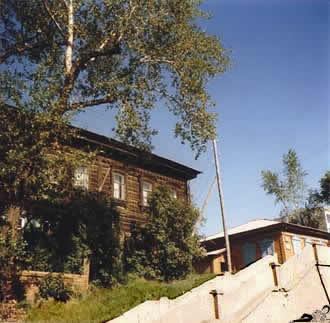 |
During the civil war, from 1917 to 1922 Irkutsk, as all of Siberia, was the stage of fights between Red Army troops and partisans on one side and the White Army under the command of general Kolchak, bandits allied with them, and various foreign occupation troops, British, French, Japanese and Czechs. Kolchak was finally defated and executed near Irkutsk in 1920 and the foreign troops were driven out of Siberia by 1922. Nowadays Kolchak is back again – as a beer brand, brewed in Irkutsk.
|
Ship on the Angara
|
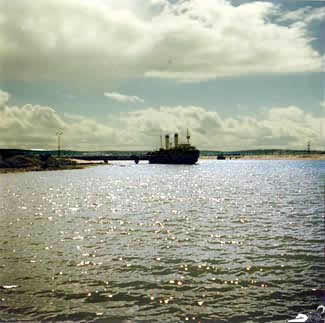 |
Nowadays the main attraction of Irkutsk is the trade
with China. People from all over Siberia come to Irkutsk to buy Chinese
goods, mostly clothes and electrodomestic equipment, in order to resell
it in others places and making a rather miserable living on it. The Chinese
merchants constantly bring the supply themselves with the Transsiberian
railroad and therefore are called "boat people" in Irkutsk,
going back and fro all the time.
Other trade items of Irkutsk are raw materials and timber. The Siberian
trees are superior in quality to most European ones as they have grown
naturally and are not a result of fast-growing forestation. The industrial
plants in Irkutsk and the region, as the pulp plant in Baikalsk and a
copper-producing plant at the ourskirts of Irkutsk, are environmental
bombs which poison both their surroundings as their employees, but they
are undisputed as they supply people with work.
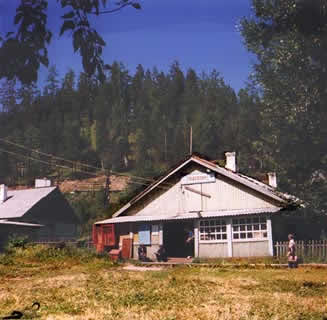 |
(Photographs from 1997. Report written in 2003)